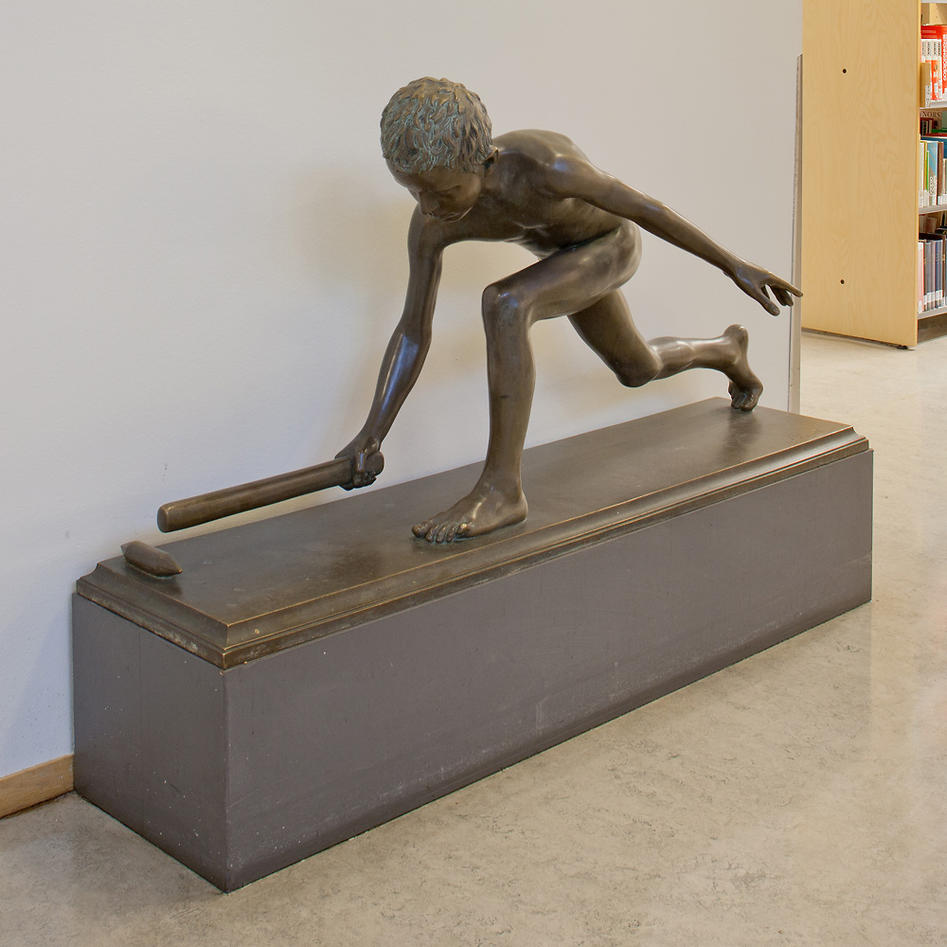Playing boy
A boy with a bat is poised to run. One foot is placed well in front of the other, and his upper body is hunched. The arm not holding the bat is pulled backwards. Any moment now, he will tear his feet away from the thin base he stands on, and run like the wind between the library shelves.

Main content
Playing boy stands on a low plinth up against the wall in the HF library. All details in the figure are painstakingly portrayed, from the little toe on the front foot, to the hollow of the shoulder on the arm holding the bat. The boy might be about seven or nine years old.
If we only look superficially at the sculpture, we don’t see his facial features, since he is lower than eye level and has his head bowed in concentration. If we take the trouble to sit down and look more closely, we see that the sculptor has not taken any shortcuts even if the face is not usually visible – even here the features are clear, vivid. The arm stretched backward hovers in an almost unnaturally straight line, a sign that the boy is frozen in the middle of a movement.
István Szentgyörgyi (1881-1938) was a Hungarian sculptor. He worked in the neoclassical style, and his sculptures are very realistic, and aesthetically designed. He made a series of sculptures for public places in Hungary, and is especially known for the Monument to the Hungarian Justice in the shape of a well in Budapest. Szentgyörgyi was famous for his portraits.
NORA SØRENSEN VAAGE
